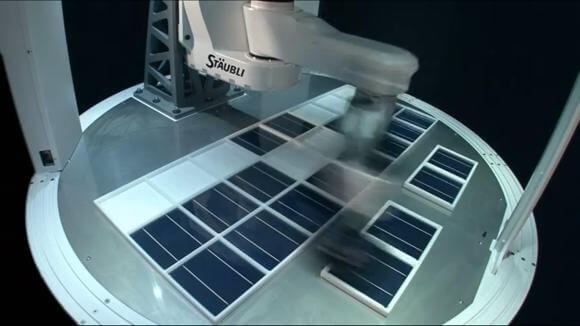
The TP80 has a work area of 1.6 meters. And working this fast, precision is key unless you want a stockpile of shattered merchandise. That’s why its movements don’t veer more than 0.05 mm off course. The 200 picks per minute rate is reached when its handling very light loads limited to 0.1 kilograms. It slows down to a still superhuman 170 picks per minute when handling its max of 1 kilogram.
It’s built for packaging applications in the various industries such as food, pharmaceutical, cosmetics or photovoltaics. Perfect if you need to pack lunches for a small army or switch out some cells on your stock of solar panels.
While TP80 represents yet another robot soon to run humans off manufacturing and packaging sorting lines, it still has some catching up to do if it’s wants to be the world’s fastest. ABB’s Flexpicker can handle a blurring 450 items per minute and has the strength to move items weighing up to 3 kilograms. And Adept’s four armed Quattro can move 300 items per minute. One advantage of having a TP80, however, is that it can be mounted on a much lighter base than parallel robots, making it easier and less costly to install.
Here’s a few high speed handling videos. Watching the TP80 handle the photovoltaic cells, I can’t help but think it would probably be an impressive blackjack dealer too.
[Videos: StaubliGroup via YouTube]



